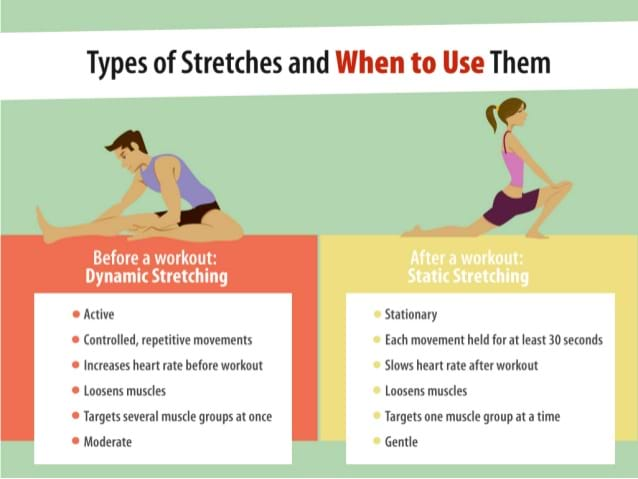Stretching exercises are a fundamental component of any fitness routine. They help improve flexibility, range of motion and reduce the risk of injury. Whether you’re an athlete, a desk worker, or simply looking to maintain your overall health, incorporating stretching exercises into your daily routine can have numerous benefits. In this blog post, we’ll explore a variety of stretching exercises that target different muscle groups, providing you with a well-rounded stretching routine.
Just as there are different types of flexibility, there are also different types of stretching. Stretches are either dynamic (meaning they involve motion) or static (meaning they involve no motion). Dynamic stretches affect dynamic flexibility and static stretches affect static flexibility.

1. Static Stretching:
Static stretching is the most common form of stretching. It involves holding a stretch in a fixed position for a set amount of time, usually around 15-30 seconds. Here are some static stretches you can try:
a. Quadriceps Stretch: Stand on one leg and grab your ankle behind you, gently pulling it toward your glutes.
b. Hamstring Stretch: Sit on the floor with one leg extended and the other bent so that the sole of your foot touches the inner thigh of the extended leg. Reach forward to touch your toes.
c. Shoulder Stretch: Extend one arm across your chest and use your other hand to gently pull it closer to your chest.
2. Dynamic Stretching:
Dynamic stretching involves active movements that mimic the motions you’ll be performing during your workout or daily activities. These stretches are excellent for warming up before exercise. Some dynamic stretches include:
a. Arm Circles: Stand with your feet shoulder-width apart and extend your arms out to the sides. Make small circles with your arms, gradually increasing the size of the circles.
b. Leg Swings: Hold onto a stable surface and swing one leg forward and backward, then side to side.
c. Hip Circles: Stand with your feet shoulder-width apart and place your hands on your hips. Rotate your hips in a circular motion.
3. PNF Stretching:
Proprioceptive Neuromuscular Facilitation (PNF) stretching is a technique that involves both stretching and contracting the targeted muscle group. It’s often done with a partner but can also be done solo. An example is the “contract-relax” method, where you contract the muscle you’re stretching before relaxing into a deeper stretch.
4. Yoga and Pilates:
Yoga and Pilates incorporate a wide range of stretching exercises that improve flexibility, balance, and strength. These disciplines often focus on full-body stretching routines, including poses like Downward-Facing Dog, Cobra, and the Cat-Cow stretch.
5. Foam Rolling:
While not a traditional stretching exercise, foam rolling is a form of self-myofascial release that can complement your stretching routine. It helps alleviate muscle tightness and trigger points by rolling a foam roller over various muscle groups.
6. Resistance Band Stretches:
Using resistance bands can add resistance to your stretches, enhancing the effectiveness of your stretching routine. You can use them for hamstring stretches, chest stretches, and more.
7. Neck and Upper Body Stretches:
To release tension in your neck and upper body, try stretches like neck tilts, neck rolls, and chest opener stretches. These can help relieve stress and improve posture.
Incorporating a variety of stretching exercises into your daily routine can improve your overall flexibility, reduce the risk of injury, and enhance your physical performance. Whether you prefer static stretches, dynamic movements, or specialized techniques like PNF stretching, finding a combination that works for you is essential for maintaining your well-being. Remember to consult with a fitness professional if you have any underlying health concerns or injuries to ensure that your stretching routine is safe and effective.